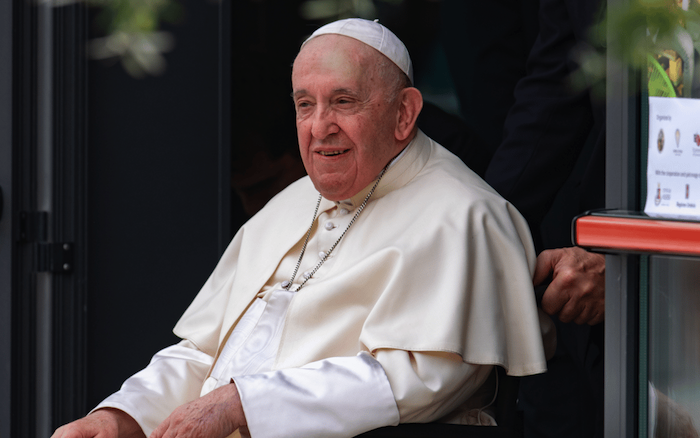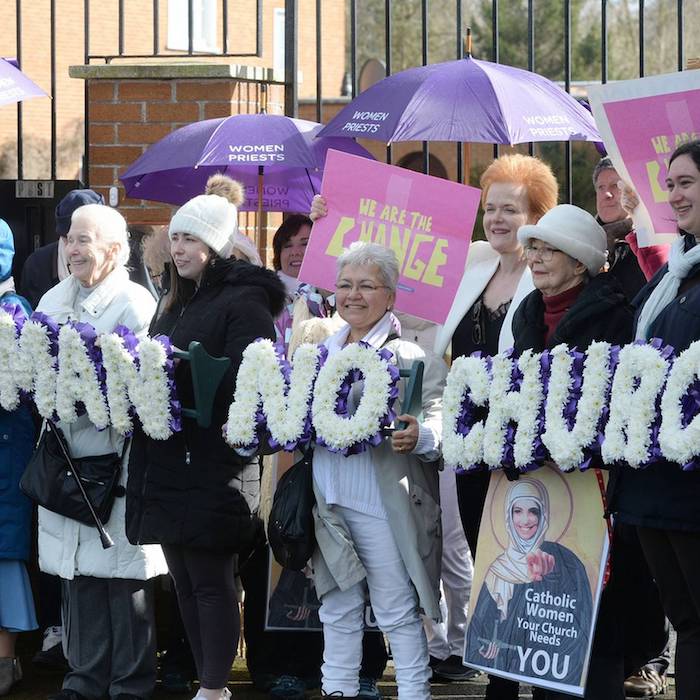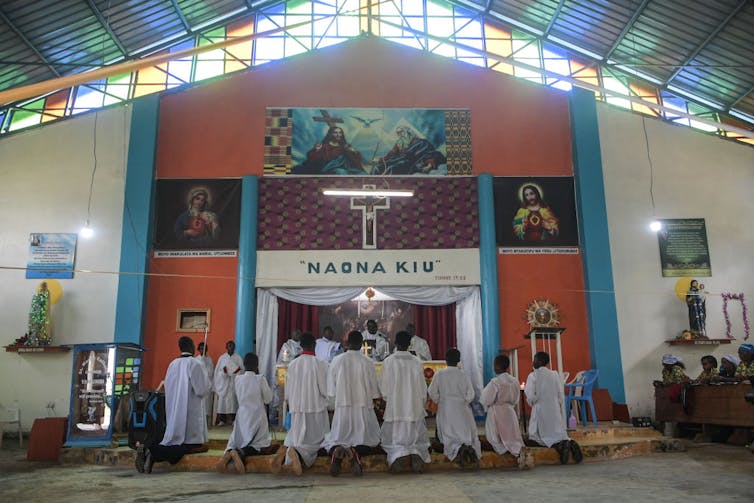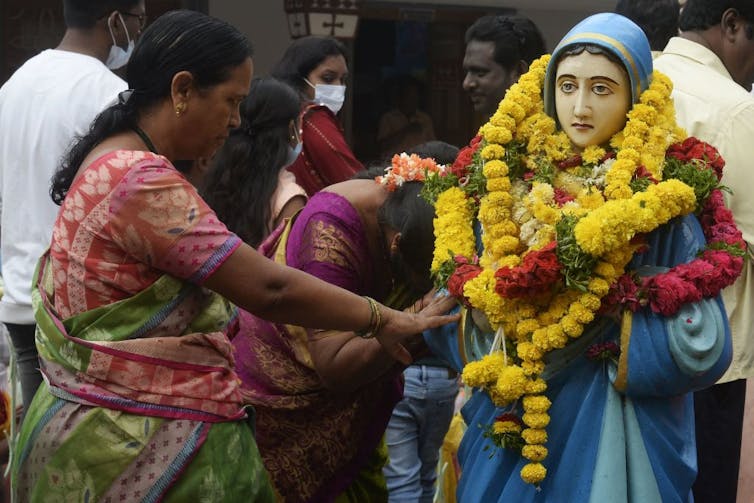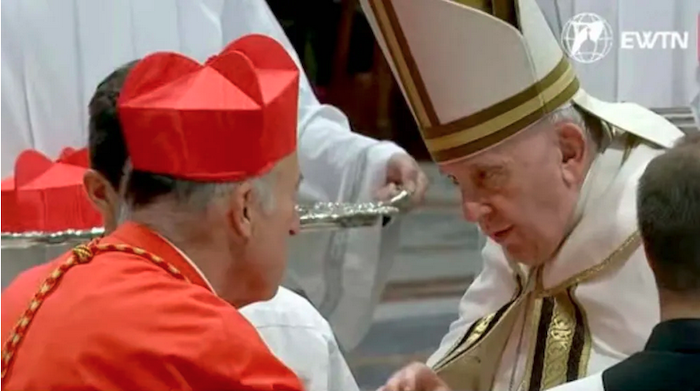— A Catholic theologian explains

Once again, Pope Francis has called on Catholics to welcome and accept LGBTQ people.
“Being homosexual isn’t a crime,” the pope said in an interview with The Associated Press on Jan. 24, 2023, adding, “let’s distinguish between a sin and a crime.” He also called for the relaxation of laws around the world that target LGBTQ people.
Francis’ long history of making similar comments in support of LGBTQ people’s dignity, despite the church’s rejection of homosexuality, has provoked plenty of criticism from some Catholics. But I am a public theologian, and part of what interests me about this debate is that Francis’ inclusiveness is not actually radical. His remarks generally correspond to what the church teaches and calls on Catholics to do.
‘Who am I to judge?’
During the first year of Francis’ papacy, when asked about LGBTQ people, he famously replied, “If someone is gay and he searches for the Lord and has good will, who am I to judge?” – setting the tone for what has become a pattern of inclusiveness.
He has given public support more than once to James Martin, a Jesuit priest whose efforts to build bridges between LGBTQ people and the Catholic Church have been a lightning rod for criticism. In remarks captured for a 2020 documentary, Francis expressed support for the legal protections that civil unions can provide for LGBTQ people.
And now come the newest remarks. In his recent interview, the pope said the church should oppose laws that criminalize homosexuality. “We are all children of God, and God loves us as we are and for the strength that each of us fights for our dignity,” he said, though he differentiated between “crimes” and actions that go against church teachings.
Compassion, not doctrinal change
The pope’s support for LGBTQ people’s civil rights does not change Catholic doctrine about marriage or sexuality. The church still teaches – and will certainly go on teaching – that any sexual relationship outside a marriage is wrong, and that marriage is between a man and a woman. It would be a mistake to conclude that Francis is suggesting any change in doctrine.
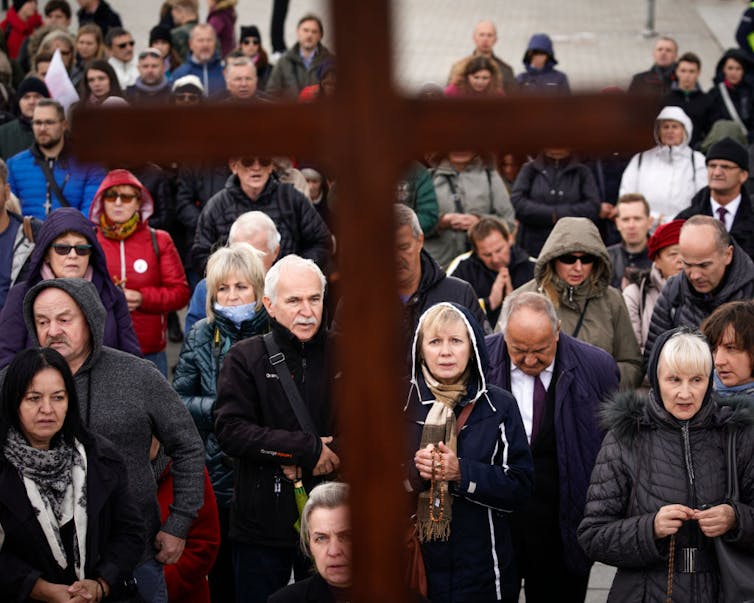
Rather, the pattern of his comments has been a way to express what the Catholic Church says about human dignity in response to rapidly changing attitudes toward the LGBTQ community across the past two decades. Francis is calling on Catholics to take note that they should be concerned about justice for all people.
The Catholic Church has condemned discrimination against LGBTQ people for many years, even while it describes homosexual acts as “intrinsically disordered” in its catechism. Nevertheless, some bishops around the world support laws that criminalize homosexuality – which Francis acknowledged, saying they “have to have a process of conversion.”
The “law of love embraces the entire human family and knows no limits,” the Vatican office concerned with social issues said in a 2005 compilation of the church’s social thought.
In 2006, the U.S. Conference of Catholic Bishops recognized that LGBTQ people “have been, and often continue to be, objects of scorn, hatred, and even violence.” And expressing care for other human persons – “especially those who are poor or in any way afflicted” by the indifference or oppression of others – represents obligations for all Catholics to embrace.
As the Francis papacy now nears the end of its 10th year, it is becoming more and more common to hear Catholic leaders attempting to make LGBTQ people feel included in the church. Chicago’s Cardinal Blase Cupich has called on pastors to “redouble our efforts to be creative and resilient in finding ways to welcome and encourage all LGBTQ people.” New York’s Cardinal Timothy Dolan has welcomed LGBTQ groups in the St. Patrick’s Day parade, against the wishes of many New York Catholics.
In this most recent interview, Francis emphasized that being LGBTQ is “a human condition,” calling Catholics to see other people less through the eyes of doctrine and more through the eyes of mercy.
A new ‘political reality’
The rapid change that has happened in prevailing social attitudes about the LGBTQ community in recent decades has been difficult to process for a church that has never reacted quickly. This is especially because the questions those developments raise touch on a gray area where moral teaching intersects with social realities outside the church.
For decades, church leaders have been working to reconcile the church with the modern world, and Francis is stepping in places where other Catholic bishops have already trodden.
In 2018, for example, German bishops reacting to the legalization of gay marriage acknowledged that acceptance of LGBTQ relationships is a new “political reality.”
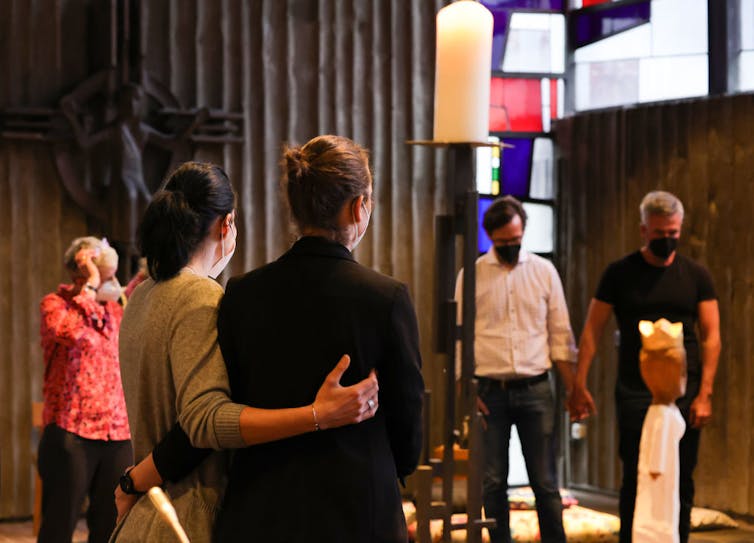
There are signs that parts of the church are moving even more quickly. Catholics in Germany, in particular, have called for changes to church teaching, including permission for priests to bless same-sex couples and the ordination of married men.
The next chapter
But those actions are outliers. Francis has criticized the German calls for reform as “elitist” and ideological. When it comes to the civil rights of LGBTQ people, the pope is not changing church teaching, but describing it.
I believe the challenge the Vatican faces is to imagine the space that the church can occupy in this new reality, as it has had to do in the face of numerous social and political changes across centuries. But the imperative, as Francis suggests, is to serve justice and to seek justice for all people with mercy above all.
Catholics – including bishops, and even the pope – can think, and are thinking, imaginatively about that challenge.
Complete Article ↪HERE↩!


